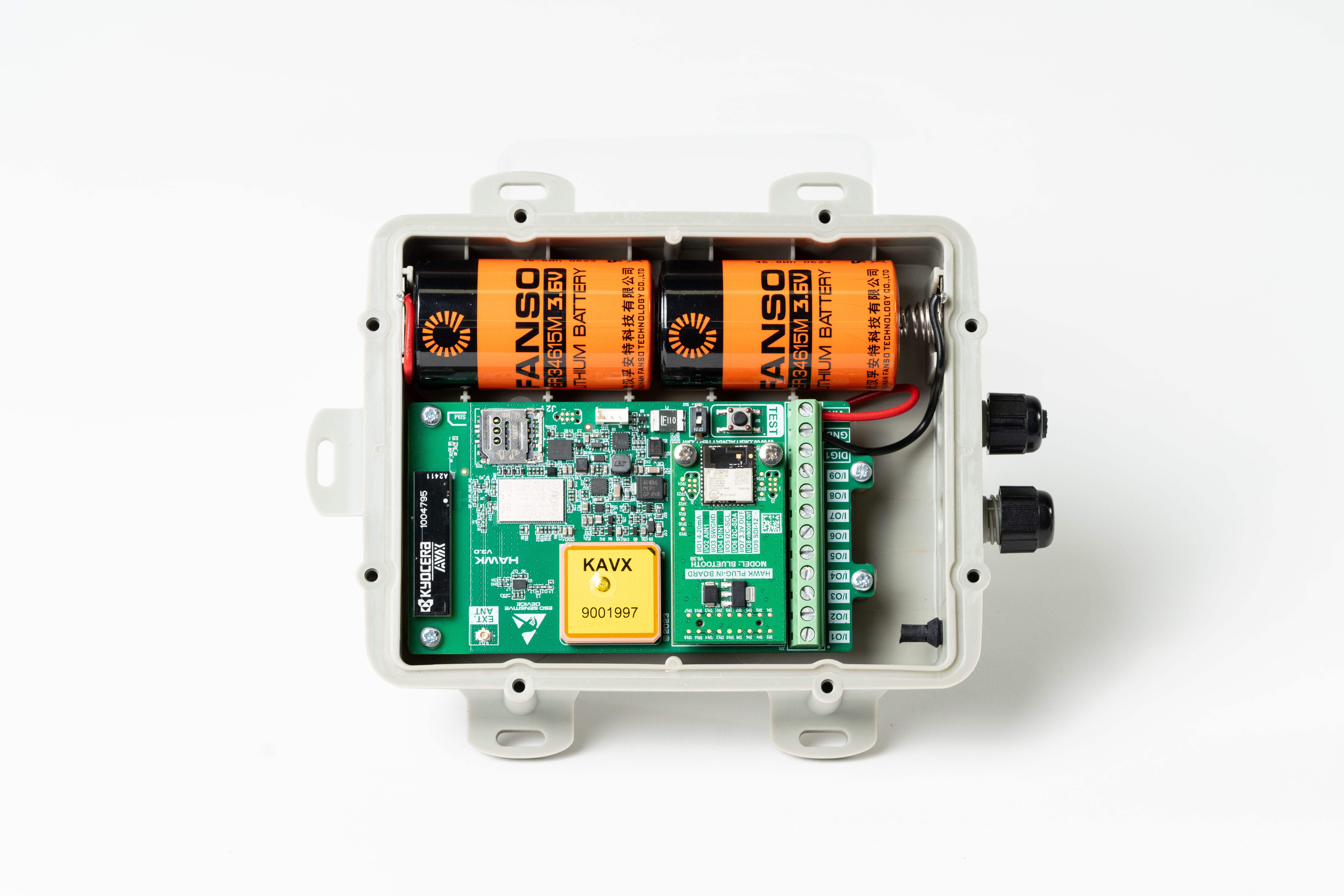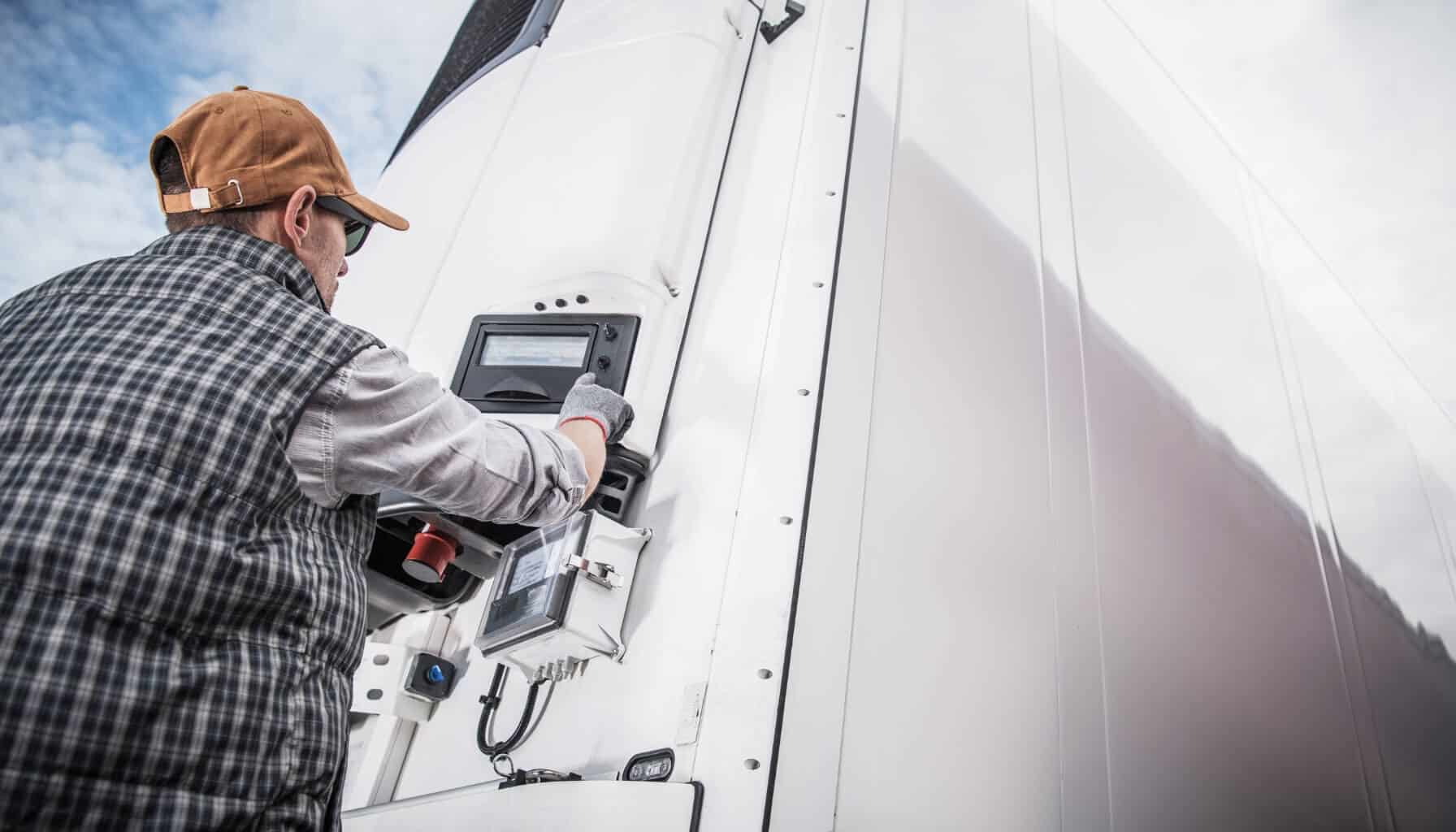Hawk Tawk: Hawk Lite vs Hawk Pro

Our mission is to help businesses connect, protect, and derive more value from their assets. As a leading global innovator, developer, and supplier of IoT solutions, we drive continuous innovation to enable our partners to deploy confidently at scale worldwide.

We have iterated on the low-power design DNA that permeates our entire product range to create a Hawk that can run for years using low-cost, Alkaline D Cell batteries.
In this first edition of Hawk Tawk, I will breakdown the key concepts of the new Hawk Lite, identify how it differs from the original Hawk Pro, and explore common use cases to determine which device is the best choice for your requirements.
Power vs Price
Batteries for $60 AUD or $6 AUD?
The only functional difference between the Hawk Lite and the original Hawk (The Hawk Pro) is the power options.
The Hawk Lite has no connector for our LiPo battery and is only compatible with external input voltages between 2-5.5V. The Hawk Pro is compatible with our 3500mAh LiPo battery and can accommodate external input voltages from 6-28V.
This means the Hawk Lite is compatible with low-cost Alkaline D Cell batteries like the Procell Alkaline Intense D. These are significantly cheaper than the LTC D Cells required for a primary cell deployment of the Hawk Pro.
It is important to consider that Alkaline batteries also differ from LTCs with a lower energy density and being less tolerant to extreme temperatures.
We believe many of our partners will find the large price difference compelling, with device specifications still meeting their remote sensor monitoring requirements.
Depending on where you source your LTCs, a Hawk lite using Alkaline D Cells is likely to be at least 20-30% cheaper than an identical Hawk Pro using LTC D Cells.
Hawk Lite PCB
In addition to the battery savings, due to the removal of the LiPo charging circuitry and Test Button, the Hawk Lite PCB is marginally less expensive than the Hawk Pro PCB.
There are also some marginal differences in the current that it can output from its Card Vboost and 3v3 outputs.
Please visit our Knowledge Base to learn more about the Hawk Lite Current Limit.
New Housing Variant
Alongside the launch of the Hawk Lite, we have also launched a new housing variant for use with the Hawk Pro or the Hawk Lite.
It closely resembles our current D Cell Housing, however, it does not include a GORE vent.
This “No Gore” version comes in at ~$10 AUD less than the variant with the GORE Vent.
We recommend the variant with the GORE Vent for applications where it is important to equalize internal and external pressures.
For example, take a case of the Hawk being deployed in a field in the direct sun. If the irrigation system wets the device, it will rapidly cool. This causes the pressure inside the housing to decrease, which can cause small amounts of water to be sucked in through the housings seal, despite the housing being IP68 rated. With a GORE Vent, the air pressure can equalize without compromising the waterproofing, preventing this “suction” ingress.
Shipping Regulations
Different batteries, different rules.
Alongside cost, a major limitation of the LTCs is the difficulty in shipping them via airfreight.
Their high lithium content and high energy density means that many can’t be shipped on passenger planes, and are limited to cargo planes only. In addition, the pilot of the airplane has the final say on the manifest, and can refuse to fly these batteries, leading to unpredictable delays when shipping via air freight.
These stringent regulations often pose an obstacle for our partners, who often want to provision devices with sensors, batteries and SIMs prior to shipping to their customers. This can lead to increased lead times, both for sourcing the batteries and shipping the assembled solution.
Conversely, Alkaline D Cells are much easier to source, and the lower energy content and different battery chemistry means that they are less hazardous to transport.
This makes them a much more convenient option for our partners, allowing them to quickly get the provisioned, assembled solution into their clients’ hands.
Battery Life
LTC vs Alkaline Batteries.
Alkaline D Cells like the Procell Intense are lower in potential energy than their LTC counterparts:
| SAFT LSH20 | Duracell Procell Intense | |
| Voltage | 3.6V | 1.5V |
| Capacity | 13.5Ah | 18.6 Ah |
| Energy | 48.6 Wh | 27.9 Wh |
As you can see, from the above, there is significantly less energy in a Duracell Procell vs an LTC.
It becomes a trade-off between power and price. For some applications, the extra battery life of the LTCs is essential, but for others, the Alkaline batteries are more than sufficient.
Hawk Pro vs Hawk Lite: Use Cases
It’s all about power.
The table below outlines common use cases of the Hawk and the instances where the Hawk Lite may be more appropriate for your needs:
| Estimated Life* | ||||
| Application | Hawk Pro (LTC) | Hawk Lite (Alkaline) | Device | Rationale |
|
Weather Station |
~2 Years |
~10 Months |
Hawk Pro |
Weather stations are power hungry. The Hawk Pro gives you the choice of using external power, solar, or higher-energy LTC batteries. |
| Seasonal Soil Moisture | ~6 Years | ~2.5 Years | Hawk Lite | Soil moisture probes are typically low power. In addition, if you are retrieving the devices every growing season, battery replacements (if needed) should be trivial. |
| Long Term Soil Moisture | ~6.5 Years | ~2.5 Years | Hawk Pro | For long-term instalments, where the Hawk Pro with a LiPo and solar combination isn't suitable, the LTC batteries should provide the longest life. |
| Bluetooth Gateway - Periodic Scanning | ~5.5 Years | ~2 years | Hawk Lite | Bluetooth scanning is quite low power. Alkaline batteries are inexpensive, and depending on the frequency of scanning and uploading, should power the gateway for many years. |
| Bluetooth Gateway - Continuous Scanning | ~6 months | ~2 months | Hawk Pro | Continuous Bluetooth scanning demands greater energy requirements. Connecting the Hawk Pro with external power is likely the best option for this application. |
| Line Fault Monitoring | ~10 Years | ~4 Years | Hawk Lite | Monitoring Digital lines for breaks is one of the lowest power uses of the Hawk. The Hawk Lite is a perfect, low-cost option for this. |
*Estimated life assuming, where applicable, 4 samples, and uploads per hour. 1 GPS fix per day.
Conclusion
Almost there!
I hope this article has provided valuable insights into the Hawk Lite, how it compares to the original Hawk Pro and its various use cases. The Hawk Lite offers a more affordable option with reduced battery life compared to the Hawk Pro. Depending on your specific needs, you may find certain applications are better served by the Hawk Pro, while others are ideally suited to the Hawk Lite.
Should you have any questions or need further assistance, please don't hesitate to contact us.

Cameron Everett
Hawk Product Manager
Cameron Everett has been the Hawk Product Manager from its launch in early 2023 and has worked closely with Digital Matter's Firmware and Hardware teams to grow the product’s feature set to meet the needs of a truly varied partner base. Having guided Hawk deployments on farms, in sewers, in factories, and everywhere in between, there is no one better to extol the power and flexibility of the device, and to answer any sensor monitoring questions you may have.


.png)




